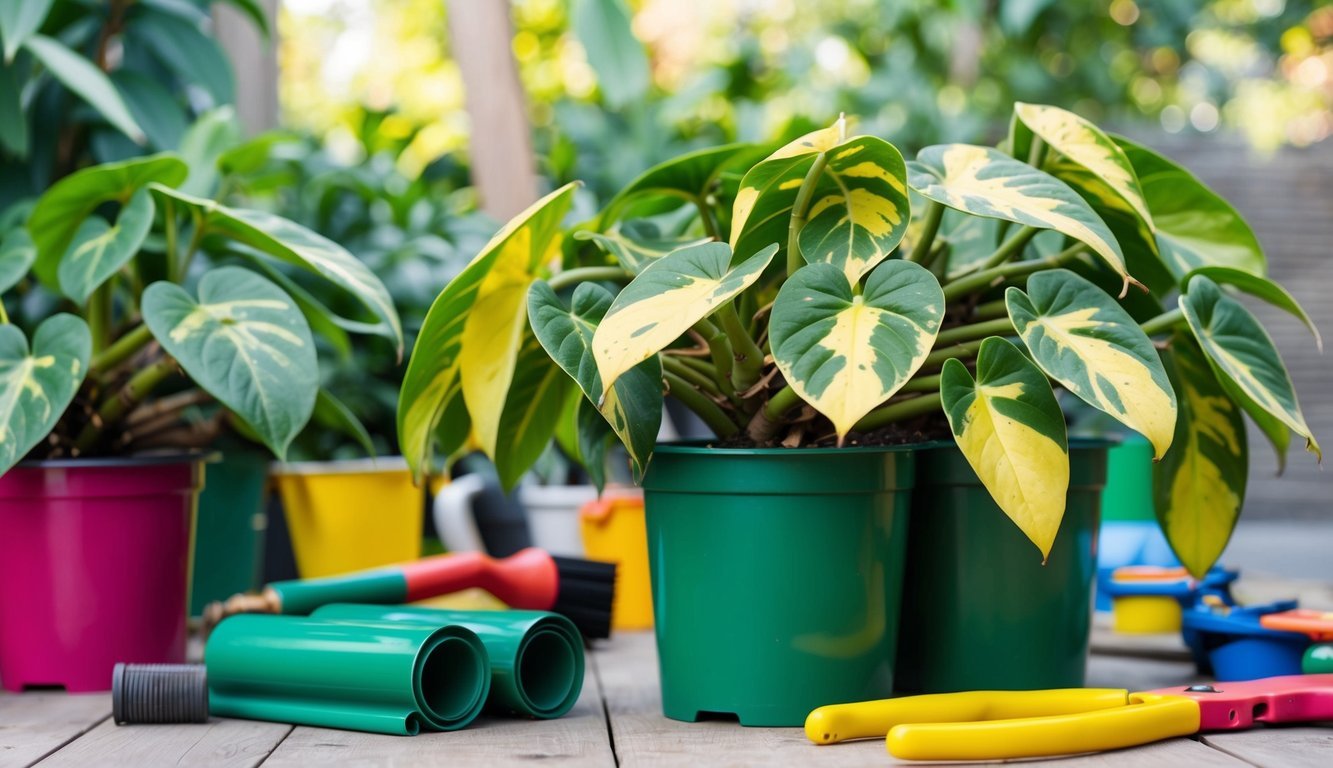
Noticing your philodendron isn’t thriving this season? It might be time to dig a little deeper into its care and potential ailments.
Gardening expert Melissa Strauss highlights various diseases that can affect these beloved plants and provides valuable tips on how to combat them.
Understanding Philodendron Care
Philodendrons are a favorite among indoor plant enthusiasts, and in warmer regions, they can flourish beautifully in outdoor settings.
However, these tropical beauties are not without their challenges.
To stay healthy, they need the right environmental conditions, which can be tricky to maintain.
Many philodendron varieties are epiphytic or hemiepiphytic, indicating that in nature, they grow on trees with exposed roots—quite similar to orchids.
This unique characteristic means they are susceptible to issues like overwatering, which can lead to fungal infections, as well as bacterial diseases.
Common Philodendron Ailments
If your philodendron is showing signs of distress, it’s crucial to investigate further.
Once you’ve ensured it receives adequate light, humidity, and proper watering, you can start looking for specific diseases.
Below, we explore common philodendron ailments, their symptoms, and effective treatment methods.
- Stem Rot
Root rot often precedes stem rot and is primarily caused by overwatering, heavy rainfall, or high humidity.
Action Steps: To combat this, maintain good air circulation and adopt careful watering practices.Using a fungicide can be helpful, but it’s best to exercise caution.
If left untreated, the plant’s health may suffer significantly.
One effective preventive measure is to take healthy cuttings and propagate them to ensure your garden continues to thrive.
- Root Rot
Signs of root rot manifest as yellowing leaves coupled with a soft crown or stems, typically caused by pathogens in overly moist soil.
Action Steps: Quickly repot your philodendron while checking the roots for any dark or mushy areas.If a large section is affected, take cuttings from any healthy roots and replant them in a fresh, well-draining medium.
- Fungal Leaf Rot
Dark, water-soaked spots on leaves indicate fungal leaf rot, which spreads through splashes of water from infected plants.
Action Steps: Isolate any infected specimens and trim away the damaged leaves.Regular applications of a copper-based fungicide or neem oil every week can help manage the infection.
- Fungal Blight
Recognizable by a white mycelium coating on the stems and leaves, fungal blight is another challenge for philodendron owners.
Action Steps: Use sanitized tools and soil during potting to minimize risks.Pruning damaged leaves is also essential to curb the spread of this blight.
- Bacterial Leaf Spot
This condition produces translucent spots along leaf edges that can turn a reddish-brown hue.
Action Steps: Avoid overhead watering and isolate the affected plant.Cut any problematic leaves to improve the plant’s overall condition.
- Bacterial Blight
Bacterial blight appears as small dark green spots on leaves that can quickly grow larger.
Action Steps: Similar to bacterial leaf spot, isolating the affected plant and removing any infected leaves is crucial to preserving overall health. - Tip Curl
Leaves that curl and lose their vibrancy could be signaling a nutrient deficiency or insufficient moisture levels.
Action Steps: Check the soil’s moisture and increase humidity if required.During spring and summer, a bi-weekly fertilization routine will keep your plant nourished.
- Cold Injury
Browning leaf edges and wilting are common symptoms of cold injury.
Action Steps: Make sure your plants are placed away from drafts.Minimize stress factors and prune away damaged sections.
- Chlorosis
Chlorosis is recognized by the yellowing of leaves between the veins, often indicating environmental stress.
Action Steps: Repotting in fresh potting mix and adhering to a consistent fertilization schedule—including essential micronutrients—will help restore the plant’s health.
Key Preventive Measures
Most philodendron diseases can be prevented with proper care.
Diligent watering and regular fertilization play a vital role in maintaining plant health.
When introducing new plants to your home or garden, inspect them closely and isolate any that exhibit troubling signs.
Taking these precautions can help ensure your philodendrons thrive this season and beyond.
Source: Epicgardening

